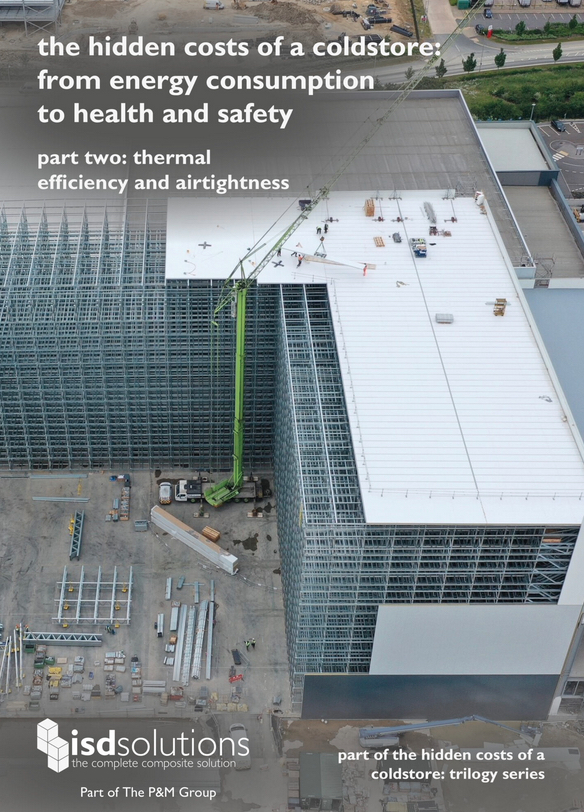Reading, UK: Halving industry standards of air leakage in cold stores can lead to “dramatic reductions” in energy usage, according to a new report, the second in a trilogy produced by the Cold Chain Federation and ISD Solutions.
The report examines how cold store thermal efficiency and air tightness reduce immediate and long-term operating costs, as well as improving environmental performance detailing methods of achieving air tightness, regulations and testing, as well as providing advice on construction and maintenance.

It includes a case study about vapour sealing at a P&M Group site where 87,600kWh could be cut in a year, saving £21,900, if industry-standard air leakages rates are halved at the 300,000 cubic metre cold store. “The key to achieving this is good vapour sealing,” said Joanne Swift, sustainability manager, P&M Group that includes ISD Solutions, who coordinated the report with Tom Southall from the Cold Chain Federation and Dermot Cotter at Star Technical Solutions.
“It is important to mention that this will not cost any extra in build price, as it is generally specified and allowed for within the overall project cost plan,” she said.
“The difference is whether it is installed, and how well it is installed, by the specialist contractor. Done incorrectly, vapour sealing will cost the end user significantly in terms of greater energy consumption, every minute of every day. Good vapour sealing is one of the main design fundamentals for any refrigerated envelope. It should be a given that it is incorporated.”
The first of the three reports covered thermal efficiency while the third, due this autumn, examines door installation and use.









